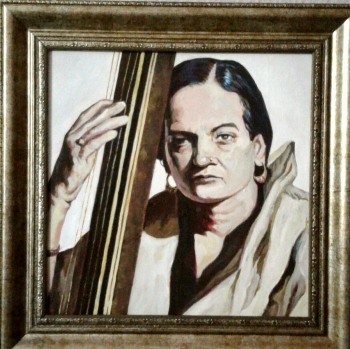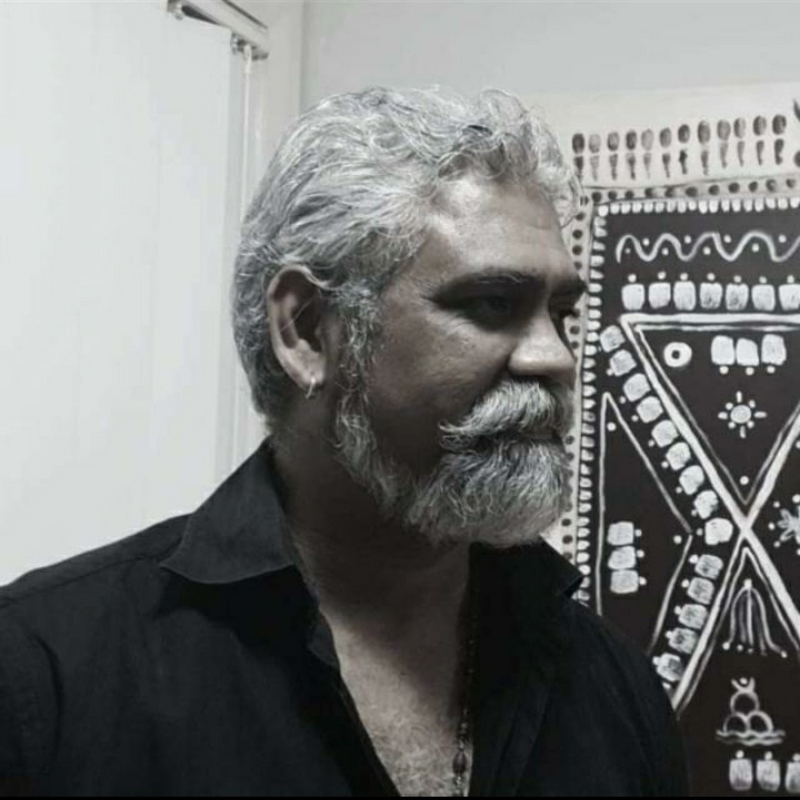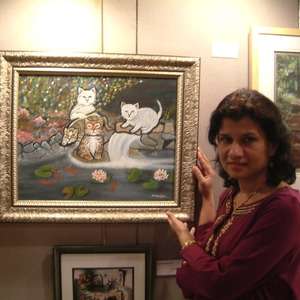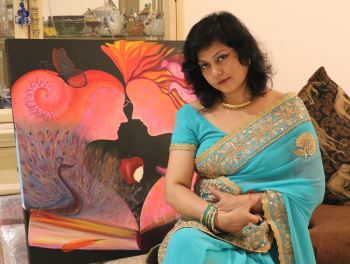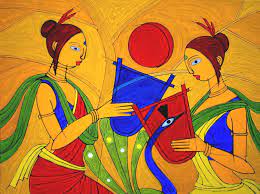
The world is actually blessed by art. In the human experience, it is what we yearn for. We may better comprehend the world and ourselves via the power of art. It is a crucial component of our society because it helps us understand our emotions better, makes us more self-aware, and makes us more receptive to new ideas and experiences. As a result, art never stops inspiring us and illuminating the potential of our planet.
While you understand the impact of traditional art in your everyday life, get a chance to buy and sell paintings online too.
We can connect with our inner selves through traditional art.
Life can be changed through the arts. In the end, when we engage with art, we engage with our inner selves. We can discover who we are and what matters to us by looking inward, listening to ourselves, and making art. It links us to our thoughts, feelings, and perceptions, as well as our experiences and external realities.
Because a work brings us to new experiences, deepens our awareness of emotions, and sheds light on issues we weren't even aware we were grappling with, it's probable that our emotions will surge when we engage with it.
But it is crucial for us to surround ourselves with other people's art as humans. We are exposed to a whole new range of sensations and concepts through art that we may have never seen before. Because we as individuals base what we are seeing and experiencing on the emotional connection that we have with that work of art, these encounters enable us to take a deep internal look. People often make decisions based on their emotions that are very meaningful to them, which helps them understand their values and the things they are passionate about. Because we are able to determine our purpose in life when we are conscious of this, we often have a tendency to be happier and healthier as people.
AWARENESS AND GRATITUDE FOR WHAT WE HAVE IN OUR LIVES ARE GENERATED BY ART
When we are able to examine all of the amazing things that are going right in our lives rather than focusing on the alternative, we tend to be happier. This is because when we can view life from a viewpoint of appreciation and fulfillment.
MORE CREATIVITY, SATISFACTION, AND HAPPINESS ARE brought INTO OUR LIVES BY ART
Have you ever felt a connection on a deep level to a piece of art? Have you ever been overcome with emotion while looking at a beautiful painting? Certainly have,
Have you ever been moved by a piece of art yet struggled to put into words how you felt? The key to this encounter is to innately identify with the artist's narrative, voice, and experience. Welcoming you into the realm of the artist.
We get meaning and a better understanding of the world through art. Research has shown that enjoying art enhances our quality of life and helps us feel good. When we do art, we feel better, are better at solving problems, and are more receptive to new ideas. Dr. Shelley Carson asserts that the ability of the arts to elevate our mood broadens our focus and enables us to discover more potential answers to original difficulties.
When you purchase a piece of art, you are purchasing a picture that will adorn your walls. Because nothing is ever made in a vacuum, almost all works of art have a backstory or narrative contained within them. It basically forms a part of an artist's life.
Traditional Narrative Art Forms
Any kind of art that uses a photo or several pictures to convey a story is referred to as narrative art. It is significant to remember that each type of narrative art is frequently influenced by the language or culture of the author.
Traditional narrative painting typically displays subjects that are more depressing and factual in nature. They employ practically all of the artistic media still in use today, such as sculpture, painting, and drawing. All of the narrative motifs that have been discussed also apply to the several Folk Art subgenres.
Abstract or geometric
As old as the human race, geometric and abstract works emphasize the usage of such patterns. The patterns that these shapes are organized in might be either symbolic or literal. Some of these designs become a recurring theme on the edge of a hand-made rug or vase.
Some of these folk art illustrations may have lost their original meaning. They nevertheless continue to be important since they can be seen in daily life as an architectural element, fabric patterns, or engraving on jewelry.
Monoscenic
One activity and one group of characters are depicted in monoscenic art. This conventional artistic viewpoint was likened to taking a picture with a brush in the days before photography.
Numerous sculptors and painters captured imagined or actual scenes in their works. The goal was to record an "active moment" through the artist's eyes on camera. Anecdotic paintings were another name for monoscenic artwork.
The majority of sculptures also have a single aesthetic. The Pieta (1499), a Michelangelo marble sculpture that shows Mary holding Jesus in her lap, is a classic monoscenic Renaissance piece.
There are several conventional landscape paintings that fit into this category as well. Wivenhoe Park Essex (1886), which shows cows grazing near a pond, is an excellent example. This kind of painting was created to preserve a priceless moment in time.
Panoramic
Multiple scenes were frequently depicted in panoramic panoramas in an omniscient manner so that you could see everything that was happening at once. In their works of classical art, the ancient Greeks, Romans, and Egyptians frequently used the panoramic storytelling method to convey stories.
The Parthenon (447 BC) contains one of the most well-known friezes in history, which honors the goddess Athena. The continuation of a march during an old pagan festival is shown in the marble frieze carving, which also has several recurring characters.
Portrait
An age-old motivation that has been used in every medium is the desire to accurately portray someone. From the 1325 BC gold mask of the Egyptian king, Tutankhamen to Johannes Vermeer's painting of a Girl with a Pearl Earring (1165), portraiture has existed throughout history and across all cultures.
The Mona Lisa, a painting by Leonardo Da Vinci from 1509, is arguably the most recognizable conventional portrait in existence. Famous portrait artists of folk art include Maude Lewis (1903–1970), whereas John Mcnaughton (1970–), an American revivalist portraitist, paints traditional art of Donald Trump in Biblical contexts.











